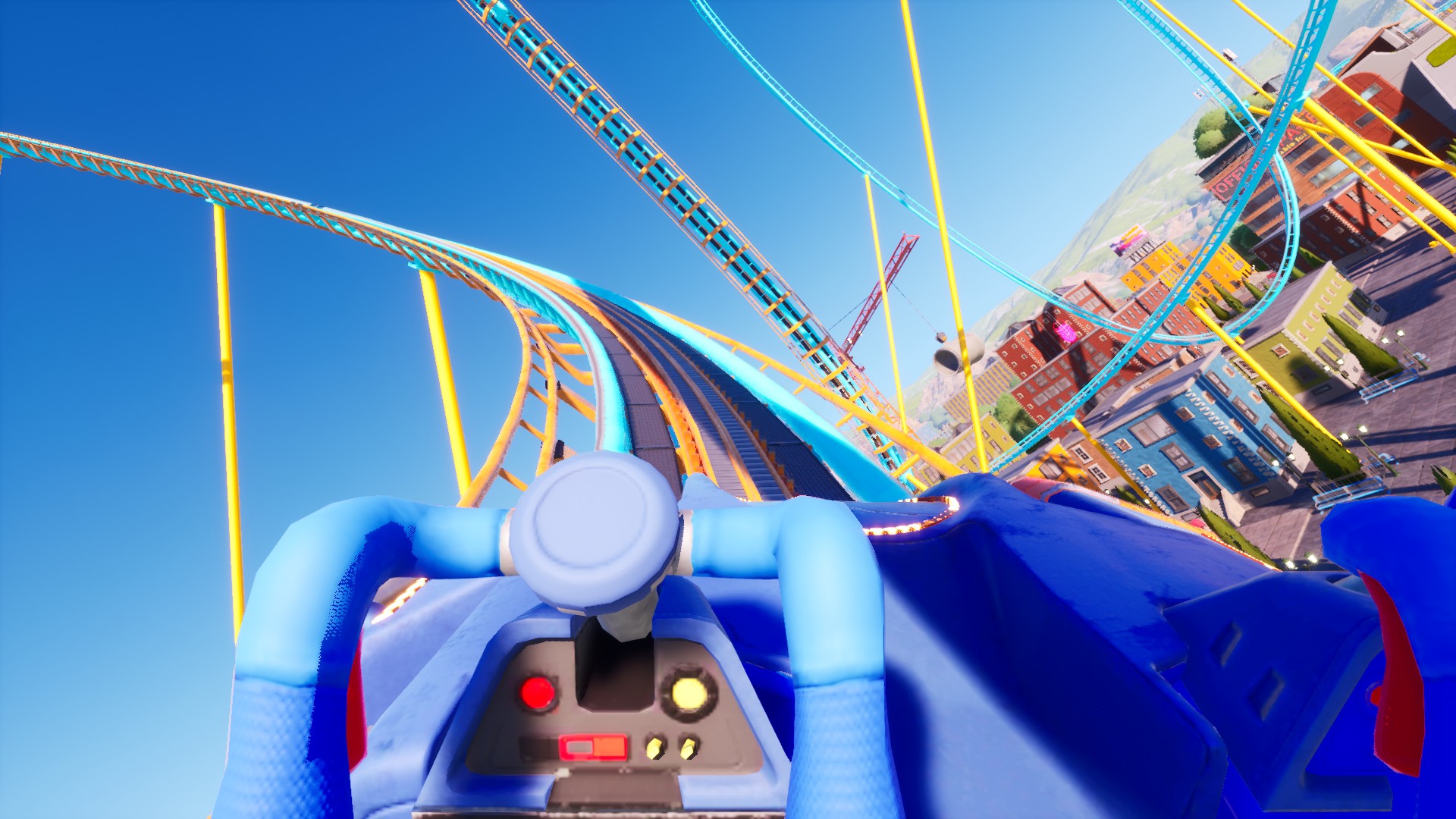
I'm not much of a daredevil – aside from leaving my deadlines a bit late sometimes – so I rely on games like Park Beyond for a sense of imminent danger. Going head-to-head against zombies, demons, and other malevolent entities in the best horror games is nothing compared to the sheer vertiginous terror of riding a digital roller coaster from hell, zooming through a vivid cityscape at breakneck speed, health and safety be damned.
It's not all swings, roundabouts, and cotton candy, though. Park Beyond is Limbic Entertainment's upcoming park management and design sim, merging the halcyon days of RollerCoaster Tycoon with the likes of Two Point Campus. My hands-on preview let me live vicariously through the eyes of a thrill-seeking, daredevil roller coaster designer-turned-theme park manager, and as scared as I am of heights, the coaster-building elements have no business being this much fun.
License to thrill
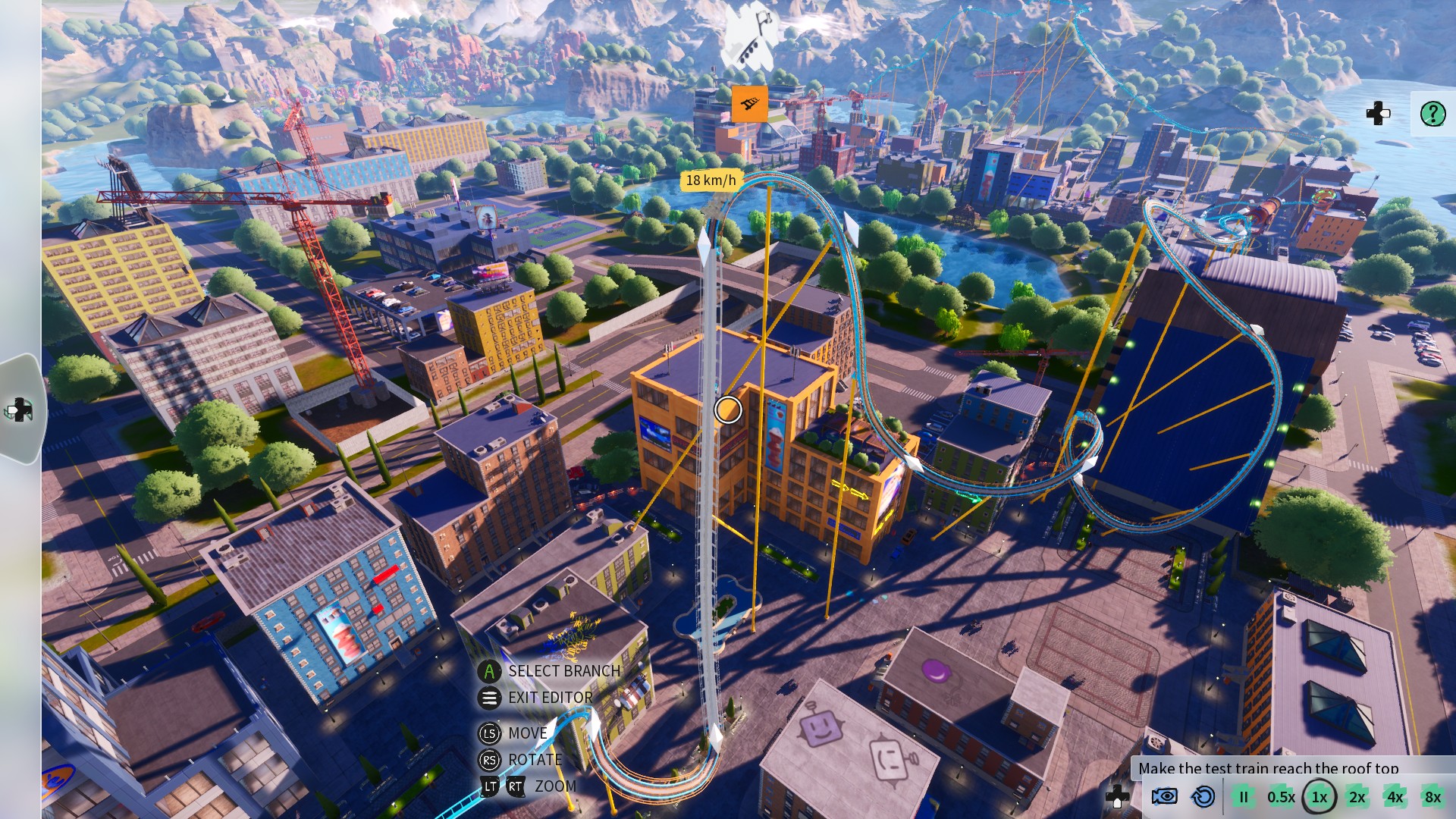
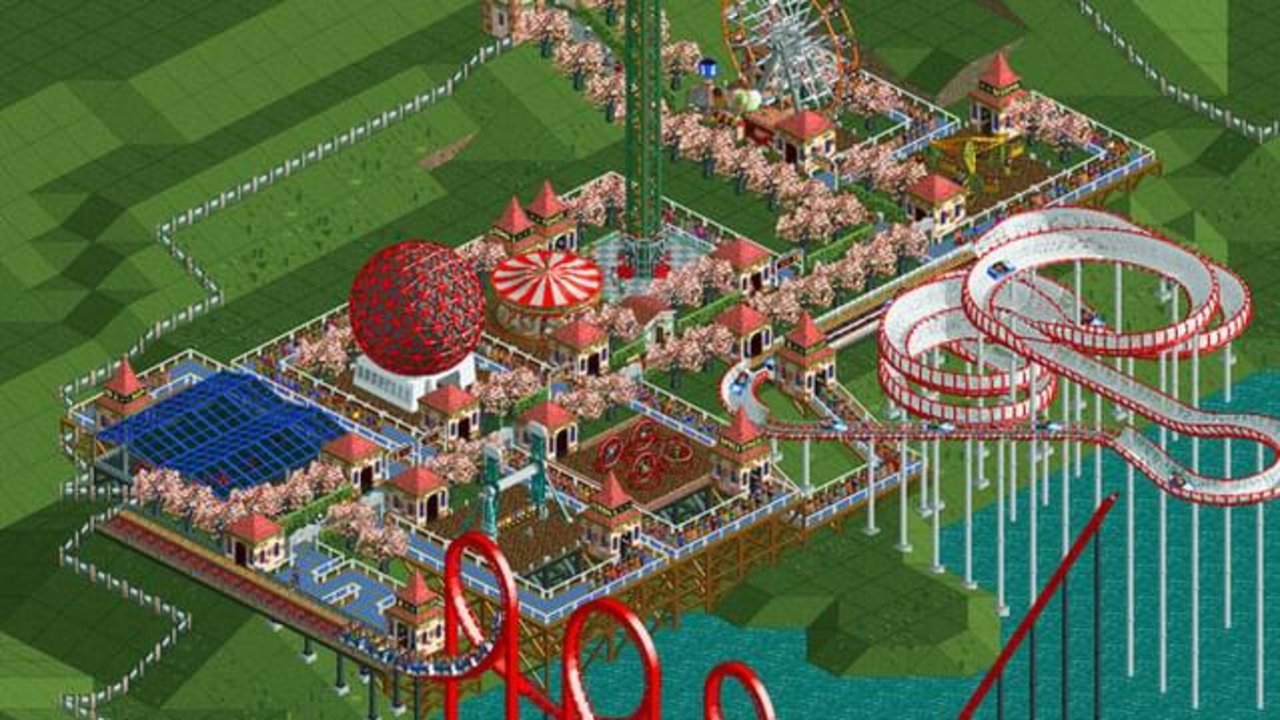
The best sim games cover all bases, from restaurant management to railway-building and more.
At its core, Park Beyond is a management sim, but with a built-in roller coaster simulation that shouldn't be overlooked. However, with the choice between the main campaign or sandbox mode, I took a special delight in turning the latter into a coaster-making masterclass.
The campaign guides you through redesigning a series of theme parks, encouraging you to use varying levels of made-up word "impossification" to do so, while sandbox mode takes the training wheels off so you can build a park from scratch. Settling down to play the first mission in campaign mode, I geared up for a coaster-building sim to rival the legacy of RollerCoaster Tycoon, and Park Beyond doesn't disappoint on that front.
Designing a well-oiled mechanical beast involves an unsurprising amount of physics; chain lift tracks help carry your test cart up sharper inclines, but you need to swap to regular tracks to send the carriage hurtling down the other side, gaining momentum and carrying itself to yet another loop-the-loop. From map view, you can see the speed of your test cart in kilometers per hour as it moves along the tracks. It gave me a moment to appreciate the beautifully rendered city, bustling with life as surprised onlookers marvel at my dastardly creation. But that's not the only way to view your coaster in action, you can opt to ride the test cart yourself for a front row seat in first-person experience.
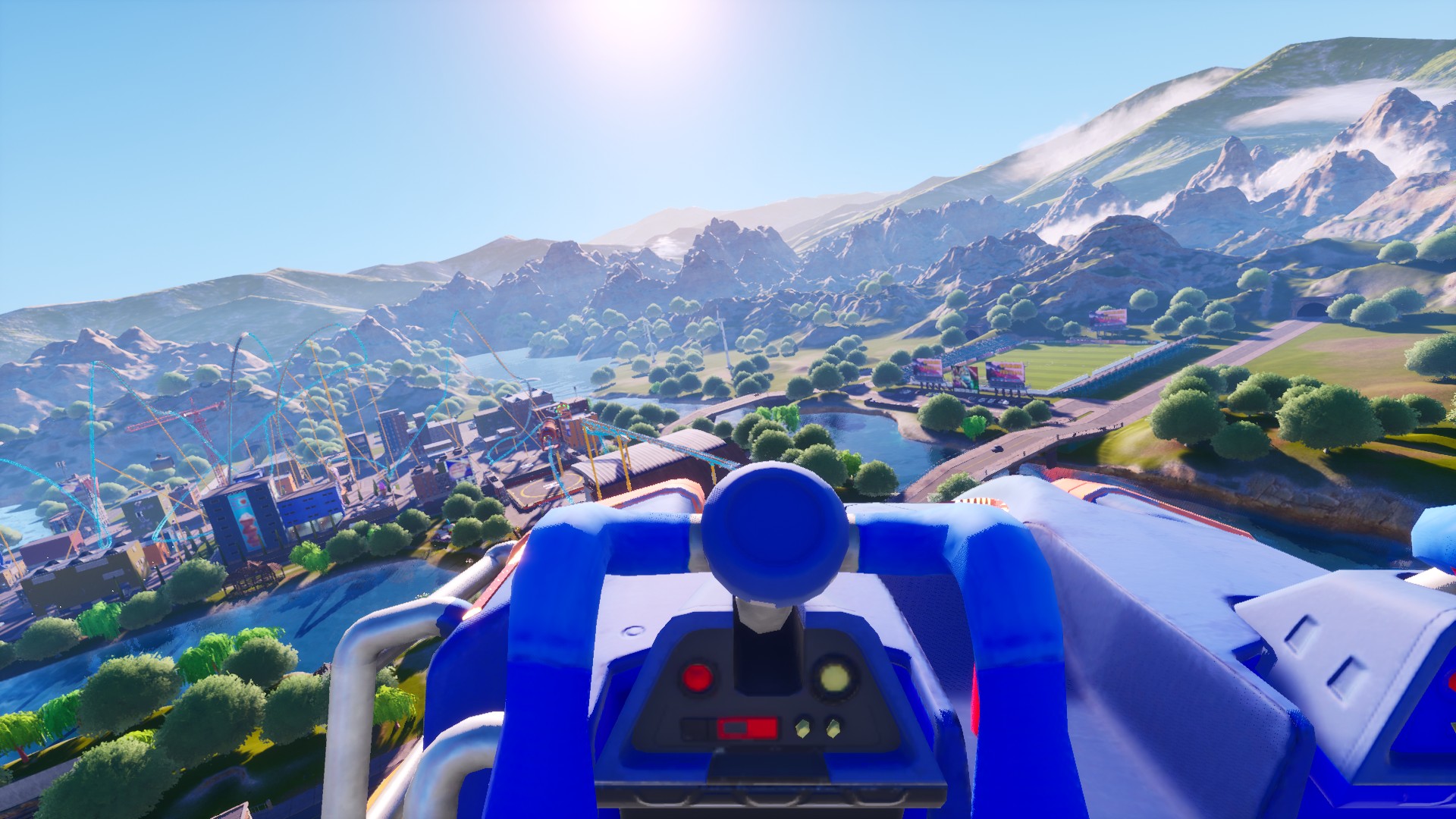
Riding my own doom coaster is by far the most fun I've had with Park Beyond. The alarmingly-accurate wind whistles almost straight through you as the cart takes a nosedive, circling round and round buildings and foliage at dizzying speeds before slowly craning back up another steep peak. I found that I could still move the camera around, taking in the city from a whole new perspective, before heading straight into a cannon – yes, a literal human cannon – to go off the rails entirely and landing on the opposite side of the lake. The riding simulation is the most exciting thing about Park Beyond, and this is coming from someone who feels nauseous even looking at the rides in Thorpe Park.
You start off as just a kid, dreaming up a coaster track from the starting point of your bedroom window, but Park Beyond's main campaign ensures that your breakneck tastes do not go unnoticed. It's nothing short of a miracle, then, that the second mission begins with investor company, Cloudstormer, commissioning my help to design, manage, and revamp a series of derelict amusement parks.
Mission Impossification
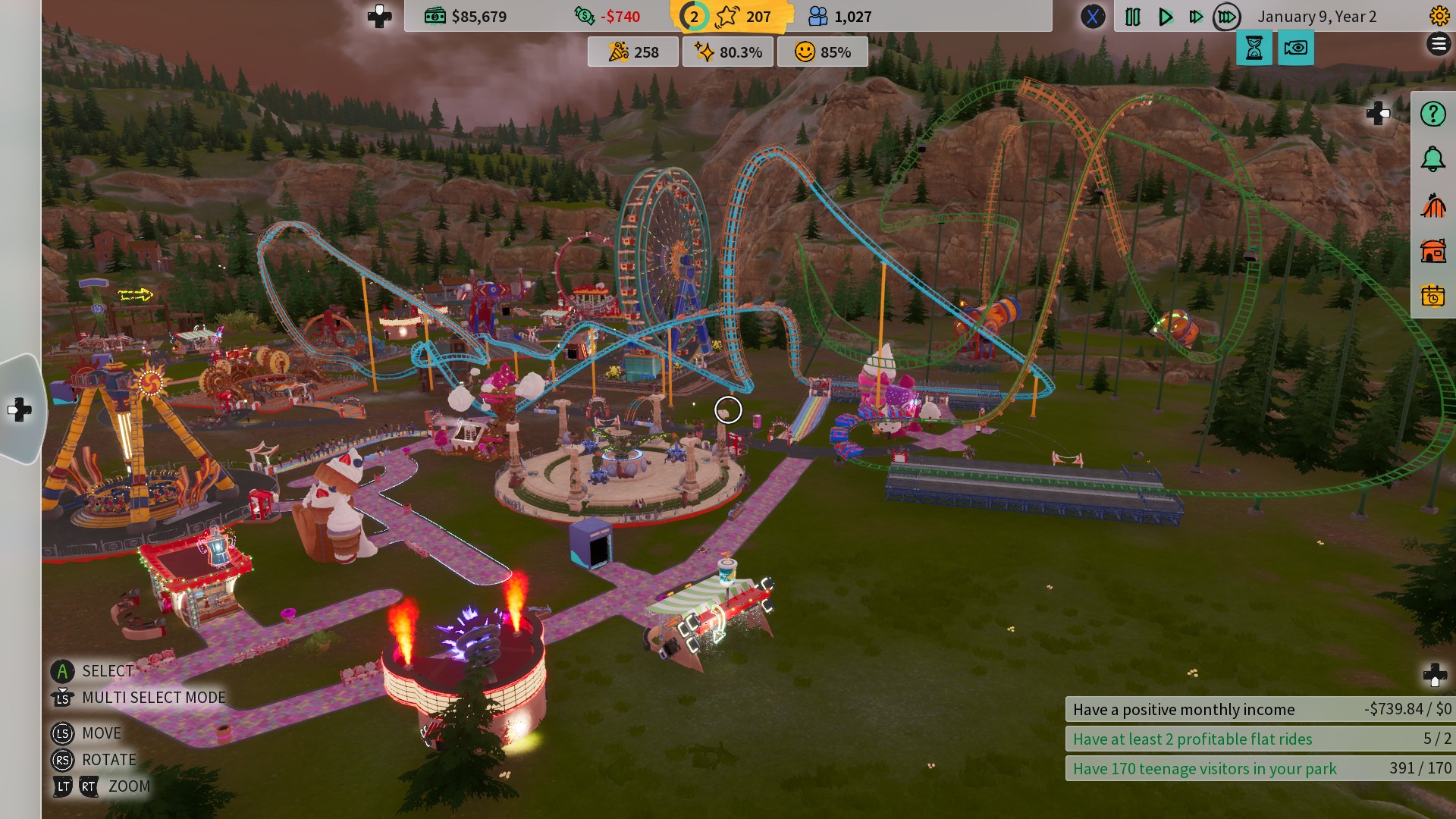
In any case, I gave Cloudstormer the finger and abandoned my campaign in favor of sandbox mode.
Management is a tricky business in Park Beyond, and due to the lack of handholding it's very much a case of clicking around to see what's what. Similar to how Two Point Campus plays out, there's a lot of tile-based spatial management involved. Expect a lot of building and placing attractions, pathways, and guest services to populate the park grounds. Rubbish bins are a necessity, as are washroom facilities, eateries, hiring of staff members, and a lot of energy drink vendors if you want to keep the teens in high spirits.
Part way through the second campaign mission, you'll get to fine-tune your target demographic, choosing between catering your park to adults, families, or teenagers. Since each buildable map item is more popular with one age group over another, it's one more thing to bear in mind. I opted for a Candyland-themed park to draw in the teenagers, because surely nothing is more Gram-able than tooth decay. Weirdly enough, they seemed to enjoy it – at least, in the passive-aggressive, ironic way that teenagers swear they don't enjoy most things – so Park Beyond wins points for believability.
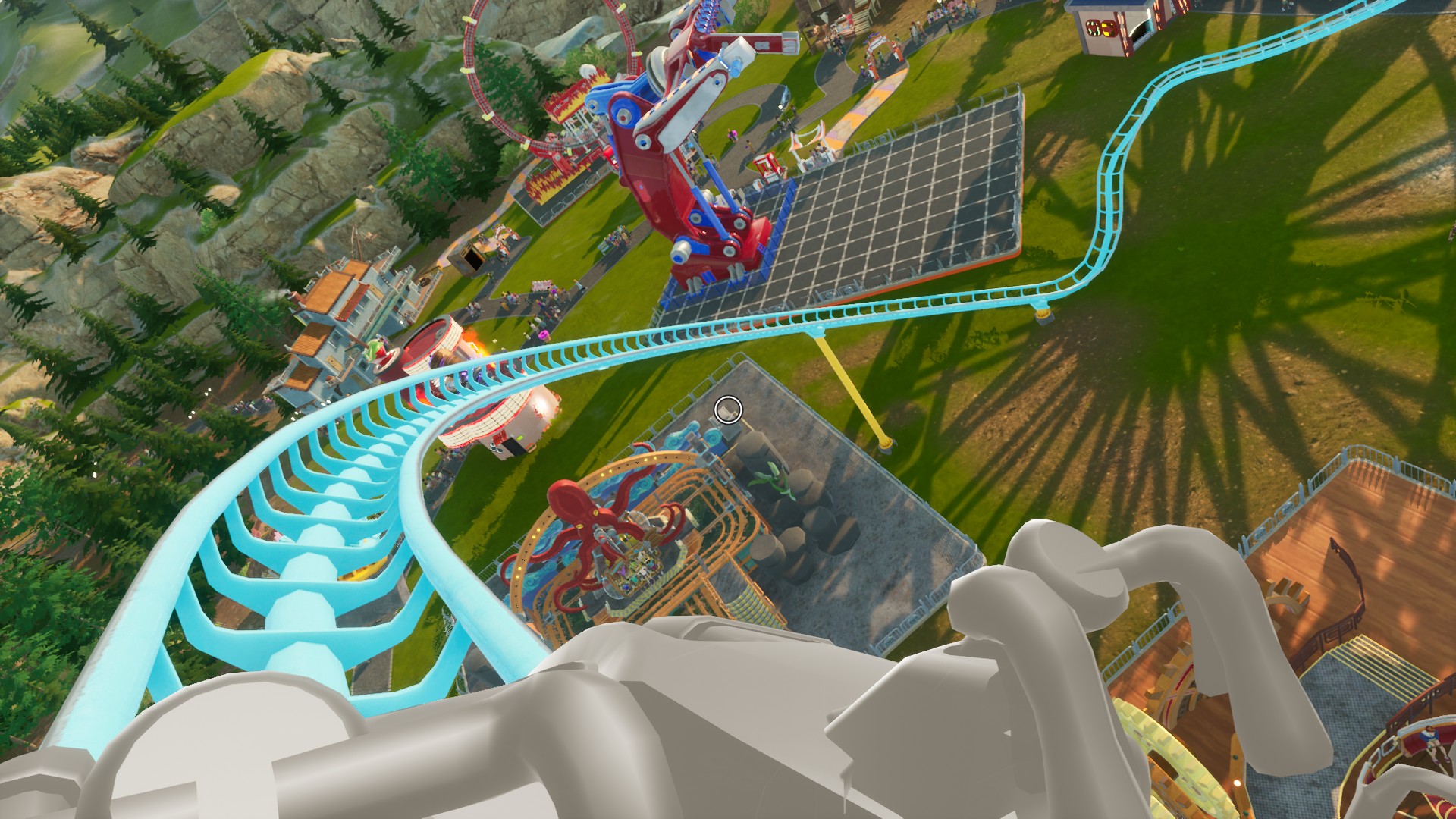
Park Beyond is an exceptionally detailed management sim, but it kept trying to hide its best feature from me. I had hoped that the task-led management goals would have given me a heads up when I was able to build my own roller coasters again. In the end these felt more like clever misdirection, diverting my attention from what I considered to be the main event to focus on more generic aspects of management sims, and that feels like a huge misstep.
Having waited hours for my next coaster session, I started to suspect that the best part of the game had long since passed. The pace slowed considerably once I'd placed all my attractions and services, since it seemed all I had to do from that point on was achieve a certain level of park attractiveness, cleanliness, or enjoyment to move on to the next objective. As I opened the menu wheel to construct yet another Candyland toilet cubicle, as per one such inane task, I saw it: the coaster menu. How long had it been there? Who knows, since the game had neglected to tell me. In any case, I gave Cloudstormer the finger and abandoned my campaign in favor of sandbox mode.
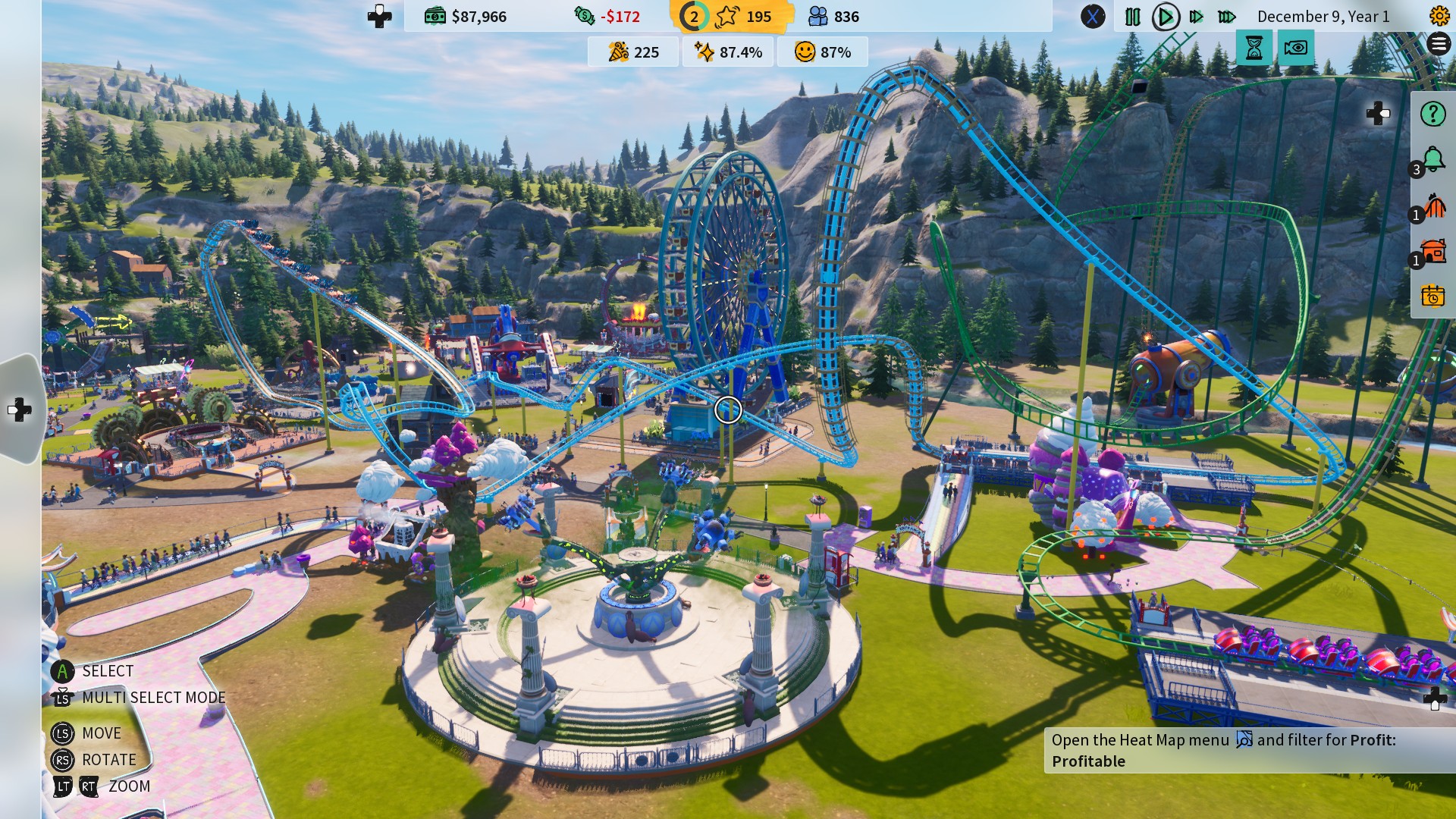
Park Beyond is good fun if you're into outdoor management sims in the vein of SimCity or SimSafari, but sadly, the main campaign buries its own lead. Coaster-creation is the unique selling point of the game, and yet it's nested among the rest of the park maintenance tools and treated as an afterthought. Not only does this leave the management systems feeling cluttered, but it just doesn't make sense: why am I being nagged to raise the price of energy drinks in the fizzy drink stalls when the best thing about the game is right there?
Sandbox mode is the clear winner for me in Park Beyond. It's a veritable oasis if you're not feeling the managerial side of things, freeing you up to practice making some truly impressive high-speed structures. It was fun to explore the coaster-builder without the game squirreling it away, something I had a feeling was done in the main campaign for fear of it overshadowing the task-led gameplay. Don't get me wrong, the main campaign isn't bad at all. I just wish Park Beyond wasn't so scared to let its strengths shine in both.
If cityscape sims are your vice, here's everything we know about Cities Skylines 2 so far.







